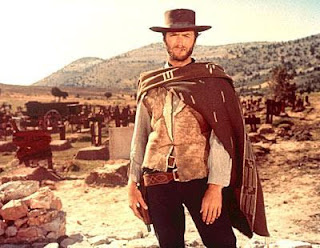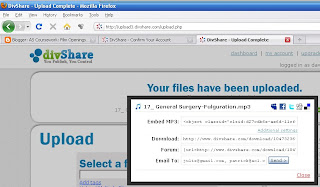Feel free to add comments/pass on suggestions! There is an extensive archive of posts covering most aspects you'll need to consider - use the BritCinema blog too to help add depth of knowledge on the film industry to your posts + Evaluation. A full guide to the coursework + what to blog is provided, and you can look over past student blogs using the Media Blogs...blog!
Key Posts
- Analysing openings guide
- AUDIENCE U+G theory
- Blog setup
- CINEMATOGRAPHY low light shoots
- COURSEWORK GUIDE in 10 steps
- Eval OVERVIEW
- Eval Q1a CONVENTIONS
- Eval Q1b REPRESENTATIONS
- Eval Q2a AUDIENCES
- Eval Q2b DISTRIBUTION
- Eval Q3 DEVELOPMENT
- Eval Q4 TECHNOLOGIES
- Final Cut Pro X
- GENRE research
- IDENTS
- Pitching
- Prelim
- TECH tips blog
- TECHNOLOGIES tag
- Titles tag
- Working title(s)
Saturday, 27 February 2010
A YouTube alternative
Some of you have had difficulties uploadingto/embedding from YouTube; if so, you could try Vimeo as an alternative
Friday, 26 February 2010
FORUMS: For, Um, You!
Have you used any online forums yet? Remember, as a general principle you should aim to demonstrate your use of a wide range of (new) media technologies in the process of creating your production. You might post on a forum to take part in a debate, or even to get some audience feedback (perhaps suggestions for titles, taglines, character names, useful films to watch comparable to your idea, etc)
Some of the links in below (copied from another post) feature forums.
Remember too to try and give some detail of how you go about finding such sites/forums, assuming you're not simply relying on links posted here: detail your search terms, and how you narrow down your results (if relevant)
Just tidying up my bookmarks and thought the following might be useful (if not already posted):
on slashers: http://www.best-horror-movies.com/friday-the-13th-part-2-the-definitive-slasher.html (the site and article; free e-zine to sign up to and a forum); http://www.nj.com/entertainment/tv/index.ssf/2009/03/from_monstrous_metaphor_to_bra.html; http://www.eatmybrains.com/showreview.php?id=119 (not the best written, but a very useful site and a forum)
rom-com/'chick flick': http://titirangistoryteller.wordpress.com/film/the-chick-flick/ (useful analysis, including an historical overview, and range of examples)
Some of the links in below (copied from another post) feature forums.
Remember too to try and give some detail of how you go about finding such sites/forums, assuming you're not simply relying on links posted here: detail your search terms, and how you narrow down your results (if relevant)
Just tidying up my bookmarks and thought the following might be useful (if not already posted):
on slashers: http://www.best-horror-movies.com/friday-the-13th-part-2-the-definitive-slasher.html (the site and article; free e-zine to sign up to and a forum); http://www.nj.com/entertainment/tv/index.ssf/2009/03/from_monstrous_metaphor_to_bra.html; http://www.eatmybrains.com/showreview.php?id=119 (not the best written, but a very useful site and a forum)
rom-com/'chick flick': http://titirangistoryteller.wordpress.com/film/the-chick-flick/ (useful analysis, including an historical overview, and range of examples)
Some Sound Advice, and note on boom
 On the boom, its strictly 1st come, first served, but no one can book it out twice in a week. You need to see John, preferrably pre-registration, to see if its free and also to book a time with John on the day you want it to run through the set up and use of the boom mic kit.
On the boom, its strictly 1st come, first served, but no one can book it out twice in a week. You need to see John, preferrably pre-registration, to see if its free and also to book a time with John on the day you want it to run through the set up and use of the boom mic kit. You can request it a 2nd time in a week, and check with John later in the day if its still free, but anyone else coming at any stage will get priority if you've booked it once that week.
AMBIENT SOUND
Whenever and wherever you are recording there will generally be some ambient sound - background noise generated by the environment you are in - eg computer fans or people walking past in F6; cars, dogs, the wind, leaves rustling outdoors.For a typical scene you will be cutting together shots taken at different times, even if only a few minutes or even seconds apart. This has consequences...
Say a dog was distantly barking in shot A (x looks at y); you cut to shot B (close-up of y) and back again to A (x looks at y). This shot-reverse shot sequence is meant to appear as all in real-time, continuous action on screen, but this can be easily undermined if the ambient sound is noticeably different between shots A and B (no dog barking in shot B).
Advanced audio editing is a theoretical solution. More practical is recording an audio track for 30secs or so, whatever would be long enough to cover a continuous section, in the environment your scene is set. If you did discover a problem with the sound, you at least have the option of binning the audio track on your footage, and OVERDUBBING this ambient noise track. For any dialogue you'd want to record your actors saying their lines, ideally able to see a screen where they can see themselves and so judge the timing. Lip-synching is a tricky, fiddly business, but your end result is hopefully a more polished piece.
---------------------------------------
--------------------------------------Young Britney is of course rather notorious for her lip-synched 'live' performances, an issue which also came to global prominence with the rather disgraceful decision to replace the young singer at the Beijing Olympics opening ceremony with another considered more photogenic.
I'm hoping to purchase a portable audio recorder next week with this in mind.
Re-shooting a scene because of scenes is unlikely to be practical; recording sound (if you didn't originally) will not require costumes or getting your actors to some isolated spot, and is a more feasible solution.
------------------------------------------------------------
If you want to link this into the real world of media production you'd do well to consider the spaghetti westerns of Sergio Leone, in some ways a masterpiece of over-dubbing, though not always so well lip-synched. Leone tended to add sound in entirely separately to the shot footage, an immense challenge which he pulls off with real alacrity. There was some controversy when the by now rather old actors recorded some new dialogue for a new cut of one of these.
 Bad cases of dubbing are a popular item of discussion on the web; try http://www.youtube.com/watch?v=tFFz-MpRZFk for example, or http://www.japanator.com/bad-dubbing-the-worst-professional-dub-in-the-world-finnish-digimon-5874.phtml Some 'voiceover artists' have acquired quite a following, eg Paul Frees.
Bad cases of dubbing are a popular item of discussion on the web; try http://www.youtube.com/watch?v=tFFz-MpRZFk for example, or http://www.japanator.com/bad-dubbing-the-worst-professional-dub-in-the-world-finnish-digimon-5874.phtml Some 'voiceover artists' have acquired quite a following, eg Paul Frees.When the Conservative government insisted that Sinn Fein members could not speak on TV, an outraged media responded by using actors to over-dub the transcript of whatever they said, in some cases using deliberately daft accents to do so to make clear their utter disdain for the policy (which was eventually overturned) [some articles on this: 1 2 3 4 5 This BBC article is a good summary; wiki on the broadcasting ban]
And I almost resisted the temptation to post this trivia question: which rhythmically global one-hit wonder, featuring Norman Cook (aka Fatboy Slim) had a huge hit with "Dub Be Good To Me"?
Wednesday, 24 February 2010
Quoting and providing sources
Whether you're directly quoting (using quote marks if within a sentence or indenting - blogger provides a quote tool to indent any highlighted text [also change the font if you do]) from anything you've read, you should provide a full reference (details of where it came from). As I'm blogging across 30+ blogs I don't always for the sake of speed, but you should!
The basic details you're looking to provide are:
Referencing & Bibliography
I might add further resources later
The basic details you're looking to provide are:
- author/s or editor/s
- year of publication (or full dd/mm/yyyy if newspaper/web)
- title of article (in "" or Italics)
- for books, place of publication + publisher
- page number/s
- URL and date accessed online if web
- for films, always give director's surname and year of release (in brackets) after the 1st mention of a title in any post (no need to repeat within a post, but do within a new post)
Referencing & Bibliography
I might add further resources later
Friday, 12 February 2010
Blog Checklist
I'll upload a definitive version of this over the hols, but for now this draft version should help@
Blog Course Work Checklist as Feb 2010
k
Blog Course Work Checklist as Feb 2010
k
Wednesday, 10 February 2010
Tapes now for sale @ £2ea
To save you having to buy 5 for £15 (Tescos) I've bought a few which you buy off Jan at £2 each
Accessing John for equipment + technical help
First of all please ensure you use the correct door for the staffroom, and do not enter the main staffroom itself. If John is not there, do not ask staff where he is, and, crucially, be quiet!!! There have been complaints from other staff. Try to give John advance notice of any requirements; to this end it would be useful to use John's email: john.cockshaw@ilkleygs.ngfl.ac.uk
Adding audio to your blog
 Basically, you need to create an MP3 file, upload this to a site which will give you an embed code- I suggest www.divshare.com - and then copy/paste in the embed code.
Basically, you need to create an MP3 file, upload this to a site which will give you an embed code- I suggest www.divshare.com - and then copy/paste in the embed code.  The two screenshots show you how this works; as with Scribd the upload is very simple; you now click on more options and you'll see the box in the 2nd screen shot appear - now just copy the embed code.
The two screenshots show you how this works; as with Scribd the upload is very simple; you now click on more options and you'll see the box in the 2nd screen shot appear - now just copy the embed code.I'll test this out with a random music track...[14th Feb: changed this; must have mistyped the email adrs on the account sign up]
As you may well be using a video camera to record your audio, an alternative to extracting the audio track and putting it through GarageBand/iTunes is to add some relevant stills to the imported track within Final Cut (preferrably - try to start using this!), upload it to YouTube and use the embed code it generates. You're also then using additional new media for your project.
How to convert your audio file to mp3
You can import your file into iTunes where you can convert it ... but you have to change some settings to do this.Open iTunes
Click 'iTunes' on the top menu
Click 'Preferences' from the drop-down list
Look under the General tab for 'import settings'
By default, iTunes will convert files to the aac format ... no good ...
So change this to mp3 from the drop-down menu
Quicker still, import an audio file into iTunes, click ADVANCED and select CONVERT TO MP3
UPDATE 18TH JAN 2011: Blogger provides a guide to audio/podcasting, including a set of links to several audio hosting/upload sites: http://www.google.com/support/blogger/bin/answer.py?hl=en&answer=80259
PROBLEMS WITH GETTING AN EMBED CODE - OR GETTING THE EMBED CODE TO WORK?
If you're struggling to generate an embed code its very likely because the file you've uploaded isn't an MP3! ALWAYS EXPORT AND USE MP3 FILES FOR PODCASTS!Also, if you copy a post from a group colleague you may find that the embedded audio in their post doesn't appear in yours - you simply need to copy/paste in the actual embed code again - to repost this post across 3 blogs, I had to go into the EDIT HTML tab, find that code and copy it.
Monday, 8 February 2010
Mini-DV tapes
I've just ordered 20 of these to sell on to yourselves at £2 each, much cheaper than Tescos and saving you from having to buy a multipack. As noted in the letter home, none will be given out/loaned otherwise.
Sunday, 7 February 2010
Please check your blog title
Log into your blog, click CUSTOMISE from the top menu, then SETTINGS; your blog title should be G321 Forename Surname - check you've done this, and add the two spaces if yours reads G321ForenameSurname
The blog title must include a space between words!!!
Subscribe to:
Comments (Atom)
